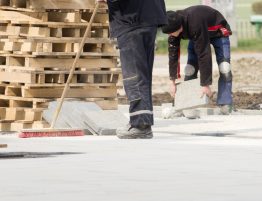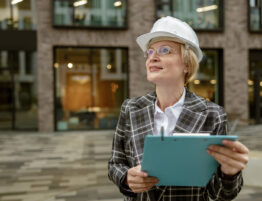
In the UK, buildings account for around 40% of energy consumption and offices are especially known as enormous energy guzzlers.
So, if there was a way for offices and other buildings like classrooms, for instance, to become energy-positive (generating more energy than they consume), this could be a game-changer for the built environment. Such innovation could slash fuel bills and dramatically reduce carbon emissions all in one go!
The good news is that energy-positive buildings (otherwise known as ‘buildings as power stations’) are already a reality and the teams behind them have also made sure the design concept is easy to reproduce.
Back in June 2018, the UK’s first energy-positive office (the ‘Active Office’) was officially opened in Wales. Designed by SPECIFIC, a UK Innovation and Knowledge Centre led by Swansea University, the Active Office is something that has real potential to revolutionise the way we create and use energy in the building sector.
How does the building create energy?
The Active Office combines a range of innovative technologies that enable it to generate, store and release solar energy in one integrated system. Key features include:
- A curved roof with integrated solar cells.
- A Photovoltaic* Thermal system on the south facing wall which is capable of generating both heat and electricity from the sun in one system.
- Lithium ion batteries to store the electricity generated and a 2000-litre water tank to store solar heat.
*photovoltaic basically means it’s able to convert light into electricity.
Does it work?

Absolutely. Before creating The Active Office, SPECIFIC designed and built the ‘Active Classroom’, the UK’s first energy-positive classroom. In its first year of operation, the Active Classroom generated more than one and a half times the energy it consumed!
Now linked together, the Active Office and Classroom are able to share energy with each other and also with nearby electric vehicles.
The benefits
Taking the idea of buildings as power stations beyond that of a unique concept and into mainstream building could benefit the UK significantly, particularly helping to create what’s often referred to as ‘clean-growth’ in the construction sector.
Alongside reducing fuel costs and carbon emissions, with more of these type of buildings, there would be less stress on the National Grid and improved energy security for the country as a whole.
Another benefit is the ease and speed in which the Active Office can be built. With most of the construction process taking place off site, it can take just one week to assemble! On top of that, the fact that the Active Office concept uses only technologies and materials that are already commercially available means it could realistically be applied to any new building. Kevin Bygate, chief operating officer of SPECIFIC describes it as “tomorrow’s office [that] can be built today.”
Perhaps we’re on the brink of being able to build whole communities that are energy-positive and therefore low carbon? What do you think?
Look out for more ways the construction industry might be able to influence a low carbon future in forthcoming editions of this blog.
Main image source: Freepik
21.11.2019








